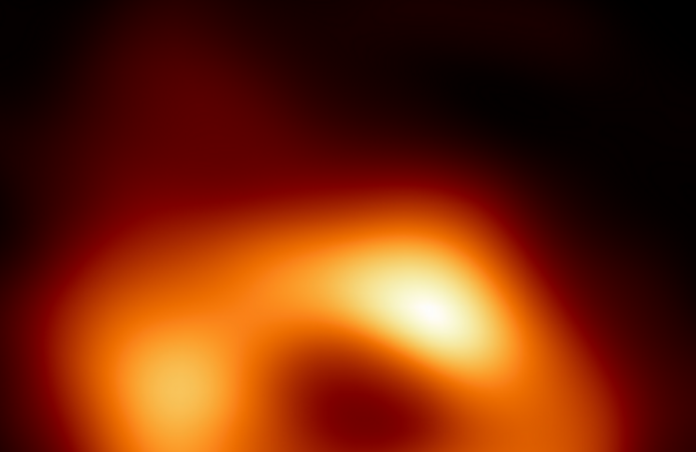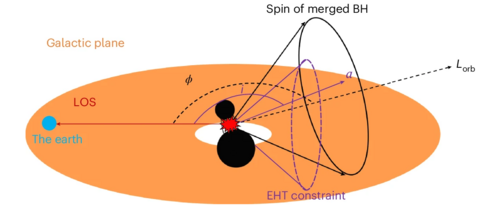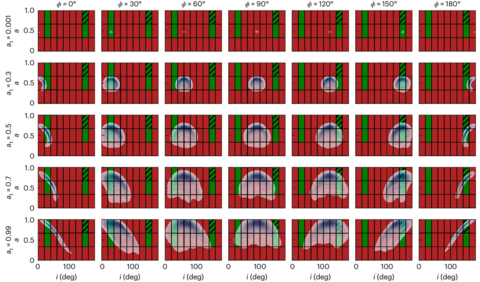Evidence of Supermassive Black Hole Merger of at the Heart of the Milky Way

Foundational cosmological models of structure formation, based on the growth of density perturbations in the early universe, do not account for the formation of objects as dense as black holes. Instead, black holes are understood to form through processes like stellar evolution and core collapse. However, even with these mechanisms, the formation of the largest black holes, supermassive black holes (SMBHs), requires additional explanations beyond the standard cosmological framework. The mechanisms behind their rapid growth remain an active area of research, with several competing theories still unproven.
Prevailing theories suggest that supermassive black holes may have formed through the rapid accretion of matter by ‘seed’ black holes from the first generation of primordial supermassive stars, the direct collapse of massive, cool gas clouds that bypass star formation, or the merging of numerous stellar-mass black holes.
In 2022, astronomy reached a thrilling milestone with the Event Horizon Telescope (EHT) capturing the first direct images of a supermassive black hole, Sagittarius A* (Sgr A*), located at the centre of our Milky Way. Now, a group of researchers at the University of Nevada, Las Vegas build on this data to present evidence of a past merger event occurring in our galaxy. It was noted that Sgr A*’s rotational axis is significantly misaligned with respect to the spin of the galactic plane. The team, composed of Yihan Wang and Bing Zhang, propose a past merger between SMBHs could have brought this about.

It was found that the rotational axis was inclined by about 30°. This poses significant challenges to the accretion and direct collapse models of SMBH formation. The presents models of gravitational accretion by a black hole seed, noting a distinction between coherent and chaotic accretion, which would lead to alignment, or perpendicular alignment respectively. However, the actual inclination lies at an awkward intermediate angle, that such models cannot account for, leading the team to investigate alternative mechanisms.
The study primarily discusses their models of black hole mergers, and how these impact the final rotational axis of a merged body. In particular, their models utilise a 4:1 mass ratio between the Sgr A* progenitor, and its companion, modelling a known merger between the milky way and the dwarf galaxy Gaia-Enceladus ~10 Myr ago. Using this data, they found that the final spin of the merged SMBH very comfortably lay within the constraints set by the EHT data.

Furthermore, they discuss the viability of such a conclusion, based on the relevant timescales. Using models of galaxy merger rates, the conclude that a merger of such a scale would take around 1 Myr. Given these timescales, it is entirely plausible that the milky way would be able to fully settle into a post-merger equilibrium state, with the merged SMBH at its core. The team confidently conclude that Sgr A* must have undergone some manner of merger in the past, be this during the Gaia-Enceladus galactic merger or otherwise.
This discovery offers significant potential for finally uncovering origins of SMBHs, providing compelling evidence for the role mergers may have played, at least in our galaxy. The research team is particularly hopeful about upcoming space-borne gravitational wave detectors, which would enable direct measurements of emissions from in spiralling SMBH binaries. Such observations could finally determine the importance of mergers in the formation of galactic cores across the universe.
--
Journal Source: Yihan Wang and Bing Zhang, Evidence of a past merger of the Galactic Centre black hole, Nature Astronomy, (2024), DOI: 10.1038/s41550-024-02358-w
Cover Image Credit: EHT Collaboration
